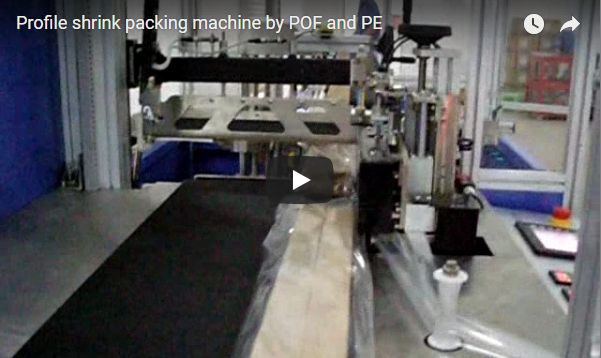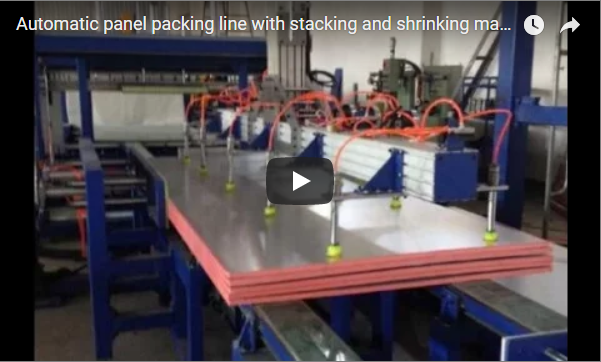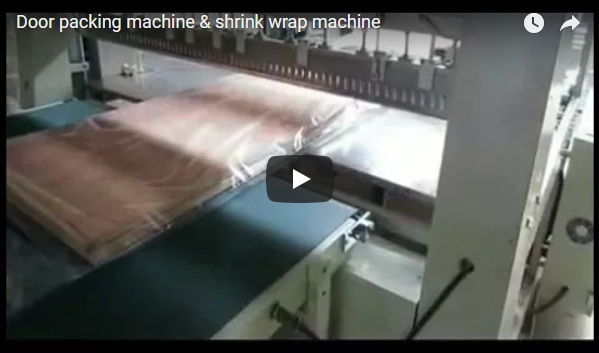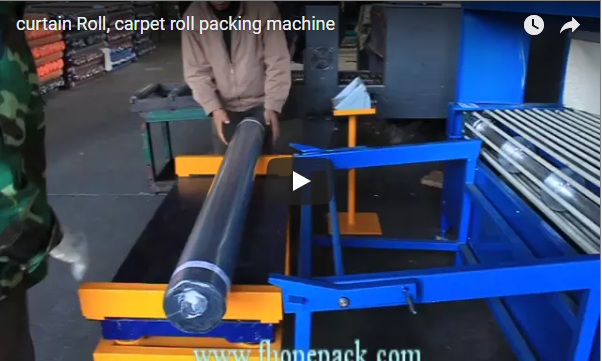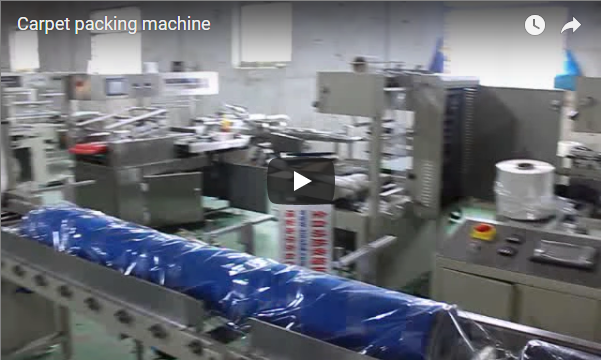Optimizing Panel Packaging: A Technical Overview of Automated Shrink Wrapping Systems
Efficiently packaging large, flat, or bulky items like wood panels, doors, insulation boards, or furniture components presents unique challenges in manufacturing and distribution. Automated panel shrink packaging machines offer a robust solution, providing protection, unitization, and a professional finish. This article provides a technical overview of these systems, focusing on their operation, key specifications, and selection considerations.
1. Operating Principles of Panel Shrink Packaging Systems
Panel shrink packaging typically involves a two-stage process utilizing an L-Bar sealer (or side sealer for continuous motion) followed by a shrink tunnel.
1.1 Film Dispensing and Product Infeed:
A roll of center-folded shrink film is mounted on the machine. As the product is fed into the machine (manually or via an automated conveyor), the film is dispensed, enveloping the product within the fold.
1.2 Sealing and Cutting (L-Bar Sealer Mechanics):
The core of the initial stage is the sealing mechanism, often an L-shaped heated bar or wire system.
- The product, wrapped in the film, moves into the sealing area.
- The L-Bar descends, simultaneously creating the front and side seals while cutting the film to separate the packaged item from the continuous film supply.
- Precise temperature and pressure control are crucial for creating strong, clean seals without burning the film. Advanced systems may use constantly heated bars or impulse wires.
1.3 Conveying to Shrink Tunnel:
Once sealed within the film "bag," the panel is automatically transferred via a conveyor system into the shrink tunnel. Conveyor types can vary (e.g., live rollers, mesh belt) depending on product weight and film requirements.
1.4 The Shrink Tunnel Process:
Inside the insulated tunnel, heated air is circulated evenly around the package.
- The controlled heat causes the shrink film (typically Polyolefin (POF) or Polyethylene (PE)) to shrink tightly around the panel's contours.
- Key factors influencing the shrink quality include tunnel temperature, air velocity, and conveyor speed, which must be carefully calibrated based on the film type, thickness, and product size.
1.5 Cooling and Discharge:
After exiting the tunnel, the package may pass through a brief cooling zone to help the film stabilise, ensuring a tight and durable wrap before handling or further processing.
2. Key Technical Specifications and Considerations
When evaluating panel shrink packaging machines, engineers and operations managers should focus on the following parameters:
- Sealing Dimensions: Maximum allowable product length, width, and height that can pass through the sealing frame (e.g., L max: 2000mm, W max: 1200mm, H max: 200mm).
- Machine Speed: Output capacity, typically measured in packs per minute (PPM) or packs per hour (PPH). This varies significantly based on panel size and system automation level.
- Film Type Compatibility: Suitability for different shrink films (e.g., PE, POF) and the range of film thicknesses (microns or gauge) the machine can handle effectively.
- Power Requirements: Voltage (V), Phase (Ph), and Power Consumption (kW) for both the sealer and the shrink tunnel.
- Compressed Air Requirements: Pressure (bar or psi) and Air Consumption (L/min or CFM) if pneumatic components are used.
- Control System: Typically PLC (Programmable Logic Controller) based with an HMI (Human-Machine Interface) for setting parameters, diagnostics, and operational control.
- Temperature Control Accuracy: Precision of the temperature regulation within the shrink tunnel (e.g., ±1-2°C) is vital for consistent results.
- Conveyor Speed: Adjustable range (m/min) to fine-tune the shrink process.
3. Embedded Video Demonstration
The following video illustrates the operation of a typical panel shrink packaging machine, showing the sealing and shrinking process:
4. Advantages of Automated Panel Shrink Wrapping
Implementing an automated shrink wrapping system for panels yields several operational benefits:
- Enhanced Product Protection: Creates a tight, water-resistant barrier against dust, dirt, moisture, and surface scratches during transit and storage.
- Improved Throughput and Efficiency: Automates sealing and shrinking, significantly reducing manual labor requirements and increasing packaging speed compared to manual methods.
- Consistent Package Appearance: Delivers a uniform, professional look for all packaged panels, enhancing brand perception.
- Security and Tamper Evidence: The tight wrap makes tampering evident and can help secure multi-component panels together.
- Potential for Material Savings: Optimized film usage compared to other methods like crating or manual wrapping can lead to cost reductions.
5. Common Applications
Panel shrink wrapping systems are versatile and widely used across industries, including:
- Wood Products: Doors, window frames, furniture components, flooring planks, decorative panels.
- Building Materials: Insulation boards, drywall sheets, siding panels.
- Metal Fabrication: Sheet metal, profiles, framed structures.
- Other Large-Format Items: Large printed graphics, assembled flat-pack furniture, certain appliances.
6. Selection Criteria and Experience Sharing
Choosing the right panel shrink packaging machine involves careful consideration beyond basic specifications:
- Match Machine Size to Product Range: Ensure the maximum sealing dimensions comfortably accommodate the largest panels planned for packaging, with some allowance for future needs.
- Evaluate Throughput Requirements: Align machine speed (PPM/PPH) with production output to avoid bottlenecks. Consider peak demand periods.
- Film Type and Cost Analysis: Determine the most suitable film type (PE for strength, POF for clarity) based on protection needs and budget. Verify machine compatibility.
- Integration Capabilities: Assess how easily the machine can integrate with existing upstream and downstream conveyor systems or production lines.
- Safety Features: Look for essential safety guards, emergency stops, and interlocks compliant with industry standards.
- Vendor Support and Maintenance: Reliable technical support, availability of spare parts, and clear maintenance procedures are crucial for minimizing downtime. Long-term operational success often hinges on vendor responsiveness and expertise.
7. Conclusion
Automated panel shrink packaging machines are indispensable tools for industries handling large, flat products. By understanding their operating principles, key technical specifications, and selection criteria, businesses can implement solutions that significantly enhance packaging efficiency, product protection, and overall operational performance. Careful evaluation ensures the chosen system meets current production demands and provides a reliable platform for future growth.
For more detailed information on different types of shrink wrapping solutions, you can explore comprehensive resources on shrinking machines.
For inquiries, contact: info@fhopepack.com

